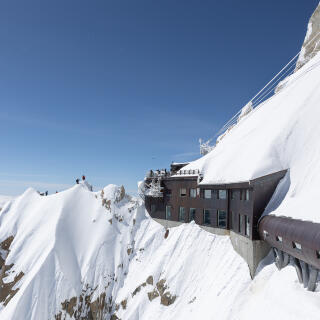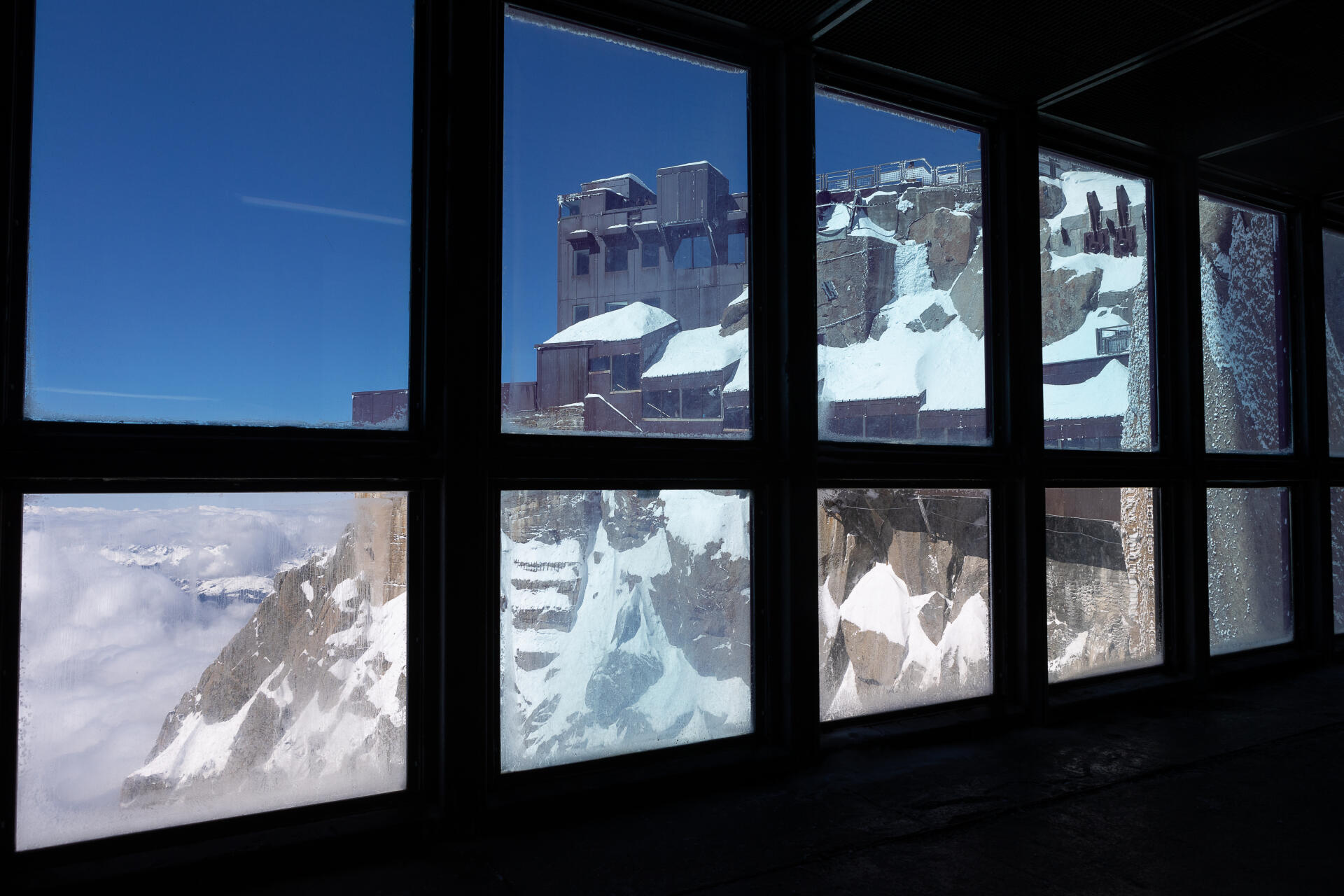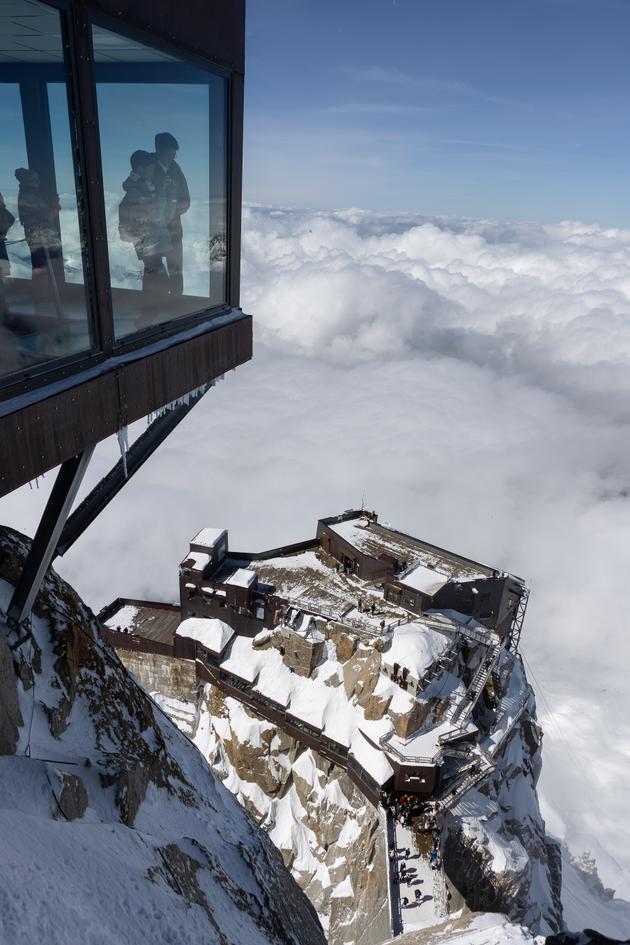


Permafrost degradation: The new problem facing mountain resorts
InvestigationGlobal warming is accelerating the deterioration of mountain infrastructure, in particular ski lifts and mountain huts. Renovation and reinforcement work is on the rise.
"Help!" cried a visitor. In the middle of a staircase at the Aiguille du Midi observatory, 3,800 meters above sea level, a breathless lady had just collapsed. After a few minutes sitting down she was feeling better.
"At this altitude, it's a regular occurrence," said Benjamin Desmargers, operations manager for the Aiguille du Midi cable car, which departs from the center of Chamonix (French Alps).
Tourists from all over the world flock here: 550,000 in 2023. The arrival station, set like a space station on a rocky spur, offers a breathtaking panorama of the Mont Blanc range. In summer and winter alike, between 25 and 50 employees keep the site running, and every evening, two technicians spend the night at the summit, like lighthouse keepers on the roof of the Alps. "We don't sleep well at this altitude," said one of them. When strong winds prevent them from descending, they sometimes remain stranded for days on end in a landscape of rocks, peaks and cliffs.

Oxygen depletion is a well-known risk associated with high mountains, but others are less so. The Aiguille du Midi observatory is located, in part, in a permafrost zone. These ice-streaked rocky soils, which freeze and then thaw depending on the time of year, are usually found above 2,500 meters. However, as temperatures rise and heatwaves multiply, the "active" permafrost layer (which freezes and then thaws) becomes deeper and deeper. This can lead to cracks in cliffs, deformed terrain, falling boulders and destabilized infrastructure at these altitudes.
"If rock compartments break away above the passage of people, or if foundations start to move, obviously that represents a danger," said Ivan Brunet, director general of Alpes Ingé, a consultancy specializing in the monitoring of permafrost zones. He observes the Aiguille du Midi and has noticed "very rapid changes" over the last 15 years. The site is highly monitored and they have carried out various types of consolidation work. For example, rocks have been secured with large nails to prevent them from cracking. Temperature sensors, crackmeters, cameras and an "automated flaw detection" system with warning thresholds have been installed. In addition to this, the teams carry out daily surveillance.

'Cracking buildings, collapsing stations'
"In the 1980s and 1990s, people built in the very high mountains without asking themselves this question. Over the last 20 years, at this altitude, we've seen more and more buildings cracking, stations collapsing and pylons moving," said Ludovic Ravanel, a researcher at the CNRS in Chamonix. The potential impacts are significant, and all the researchers agree that these hazards will increase in frequency for ski lifts in the years to come.
You have 69.5% of this article left to read. The rest is for subscribers only.
